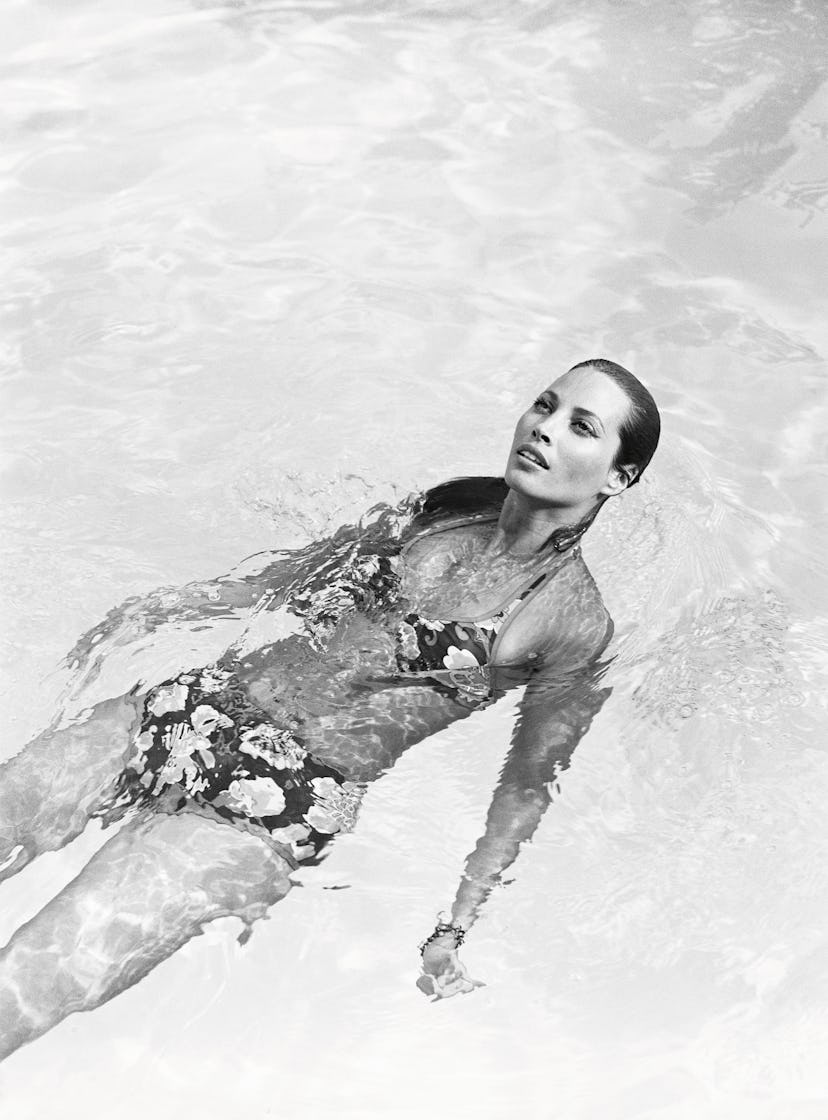With The ’90s, Pamela Hanson Presents a Love Letter to Fashion’s Defining Decade
The famed photographer cracks open her archives to reveal an intimate look at the supermodel era.

“I’m not a big nostalgia person, because I think it’s a waste of time,” says the renowned photographer Pamela Hanson—whose 40-plus-year career includes shooting Beyoncé, Jennifer Lopez, Sofia Coppola, and countless stars. Her images of Kate Moss, Christy Turlington, Claudia Schiffer, and Naomi Campbell in the 1990s were integral to shaping our perception of the supermodel era. She’s just not typically one to look back: “We are all in our lives where we are, when we are,” she says. That is, until now. With her book The ’90s, available September 2 from Rizzoli (along with an exhibition at Staley-Wise Gallery in New York titled In the ’90s,) Hanson cracks open her archives to revisit the decade that transformed not only her groundbreaking career but fashion media writ large.
Hanson moved to Paris in the 1980s, and started photographing her roommate, former model and editor Lisa Love, along with their friends. She found herself right in the middle of the fashion crowd. “It was a very different but incredible time,” says Hanson. “It was a bohemian kind of life. There was a lot of creativity and energy in fashion. There was money and an enormous amount of freedom.” The photographer, who was born in London and is now based in New York City, would go on to shoot for Vogue, Vanity Fair, and ELLE, and land work in the permanent collection at the Smithsonian American Art Museum. “But I fell into fashion photography,” Hanson explains. “I wanted to be a curator; I studied art history. After college, I worked in a photo gallery in Boston for a couple months. We went down to the auctions in New York, and we met a fashion photographer. I was like, how do you become that?”
Christy Turlington, ELLE, 1990, New York
She researched the craft through magazines and gained experience by assisting on sets of local department store ad shoots. Love—who wrote the book’s poignant foreword and is “like my sister,” Hanson says—was modeling in Paris with the legendary photographer Arthur Elgort. “I met with him in New York; he had no idea who I was. He took me out for lunch and looked at my portfolio. He was like, ‘I don't think you’d be a very good assistant, but if you move to Paris, I’ll hire you as a second assistant.’ I ended up being his third assistant—I was basically his driver. I would get him chocolate.”
Bridget Hall, Vogue Italia, 1994, Paris
Meanwhile, on her own time, Hanson was capturing candid moments among her close cohort. “All of my friends were models,” Hanson recalls. “And I just was recording them, getting dressed, putting their makeup on, hanging out and in the streets.”
The bonds Hanson formed with her subjects give the photographs in The ’90s a warm, relaxed feel amid all the glamour—an almost documentary-style approach that has become her signature. “There’s an intimacy with my pictures,” she says. “Being a woman, I was like, let’s hang out. And at that time, there weren’t that many women photographers.”
Tyra Banks, Vogue Italia, 1992, Rome
Alicia Silverstone, GQ, 1995, Los Angeles
“What I wanted was real life, and I wanted to create an environment for the girls: you’re in your apartment, you’re flirting with your boyfriend. It was more driven by that than by the clothes. And they all had their own personalities. Kate was a minx. She was that funny, English kind of quirky, but really cute. And Christy was more like an American beauty—that smile. And Claudia was definitely more German.”
Christy Turlington, Esquire, 1997, New York
The 1990s were a time of economic growth and prosperity, and Hanson’s book reflects that reality. Vintage editorials show Turlington jumping into a pool in Florence and Tina Chow dripping in Chanel jewels. “In the old days, you would’ve had a week to go somewhere and do a shoot. It was just relaxed,” Hanson says. “We used to shoot in Miami and be like, ‘Let’s go to a café. We’ll tell the owners we’ll buy lunch as payment.’”
Tina Chow, Tatler, 1983, Paris
But what resonates most is the level of ease, comfort, and rawness Hanson captured in each scene. “What I respond to is really emotional,” she says. “I loved the girls, and I loved having a connection with them. It wasn’t an intellectual decision. It’s what I still like now: I like life. I have enormous respect for all kinds of photographers who create their own contrived images. For me personally, I just respond to the girls.”
Christy Turlington, Jane, 1998, Florence
Kristen McMenamy, Mademoiselle outtake, 1985, New Jersey.
Carolyn Murphy and Trish Goff, Vogue, 1994, New York.